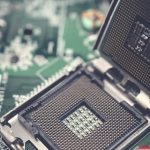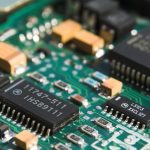Amid intensifying global competition for artificial intelligence leadership, Moonshot AI, a Chinese startup backed by Alibaba Group and Tencent, has brought new attention to China’s AI sector by launching the Kimi K2 Thinking model. The rapid ascent of Kimi K2 Thinking signals a significant milestone, as the open-source model outperformed major U.S. products in key industry benchmarks. Many industry observers are reevaluating U.S. AI dominance and closely watching how domestic and international firms adapt to this shift. Moonshot AI’s approach, noted for combining technical sophistication with cost-conscious strategies, adds a fresh dynamic to debates over resource use, open-source models, and innovation in the industry.
Earlier reports focused on established U.S. AI companies maintaining an edge in model performance and resource investment. Until now, open-source contenders such as DeepSeek and Qwen showed incremental progress but did not broadly defeat top U.S. models like OpenAI’s GPT-5. However, with Kimi K2 Thinking’s release—both in terms of performance and cost—the perceived capability gap between leading U.S. and Chinese models appears to be narrowing, adding new complexity to the global AI race narrative.
How Does Kimi K2 Thinking Measure Up Against Other AI Models?
Kimi K2 Thinking surpassed expectations by achieving a 44.9% score on Humanity’s Last Exam, outpacing both OpenAI’s GPT-5 and Anthropic’s Claude Sonnet 4.5. The model also demonstrated strong results on the BrowseComp and Seal-0 benchmarks, where it led in real-world search and information-seeking tasks. As a fully open-source product, Kimi K2 Thinking allows greater access for research and commercial use, challenging the performance gap often cited between proprietary and open models. According to Moonshot AI,
“Kimi K2 Thinking sets new records across benchmarks that assess reasoning, coding, and agent capabilities.”
What Drives Its Cost Efficiency and Technical Distinctions?
Cost has emerged as a key advantage, with reports estimating the model’s training expense at $4.6 million, significantly below what is typical for comparable U.S. systems. Kimi K2 Thinking employs a Mixture-of-Experts architecture, utilizing one trillion parameters with 32 billion activated per inference, and adopts INT4 quantisation for faster generation without major performance loss. Market analysts note that these strategic choices have produced a remarkably cost-effective alternative. As noted by an iiMedia analyst, innovation in model architecture and training techniques has contributed to a marked reduction in overall expenses for major Chinese AI projects.
Can Moonshot AI’s Success Shift Industry Dynamics?
The entrance of Kimi K2 Thinking is seen as evidence of shifting industry pressures, particularly by pushing U.S. companies to reckon with new pricing and performance expectations. While some experts point to a four-to-six-month lag in open-source models compared to leading closed systems, others recognize the narrowing gap and the competitive pressure this brings. Deedy Das, a partner at Menlo Ventures, remarked,
“Today is a turning point in AI. A Chinese open-source model is #1. Seminal moment in AI.”
Public reactions and independent benchmarks indicate this release has prompted both excitement and concern within the sector, fueling ongoing debate about sustainable advantages, open innovation, and global leadership.
Industry observers remain uncertain whether this moment represents short-term convergence or signals stable, ongoing competition between U.S. and Chinese AI developers. Moonshot’s licensing scheme, which requires high-traffic or high-revenue deployers to visibly acknowledge Kimi K2’s origin, underscores the growing brand identity of Chinese models in international markets. The recent performance adds to the reputational momentum of Chinese AI startups like DeepSeek and Baichuan, which are also embracing low-cost, high-accessibility strategies.
The comparative progress of Kimi K2 Thinking offers valuable insight for organizations seeking to balance cost and capability. As technical distinctions between open-source and proprietary models narrow, the value of innovation in architecture, training efficiency, and licensing flexibility increases. Strategic monitoring of hardware partnerships and infrastructure choices is essential for businesses and institutions aiming to remain responsive to shifts in the AI chip market and overall capabilities. For AI practitioners and decision-makers, understanding the evolving landscape of open-source licensing, benchmarking, and performance optimization is crucial for navigating upcoming opportunities and risks.










